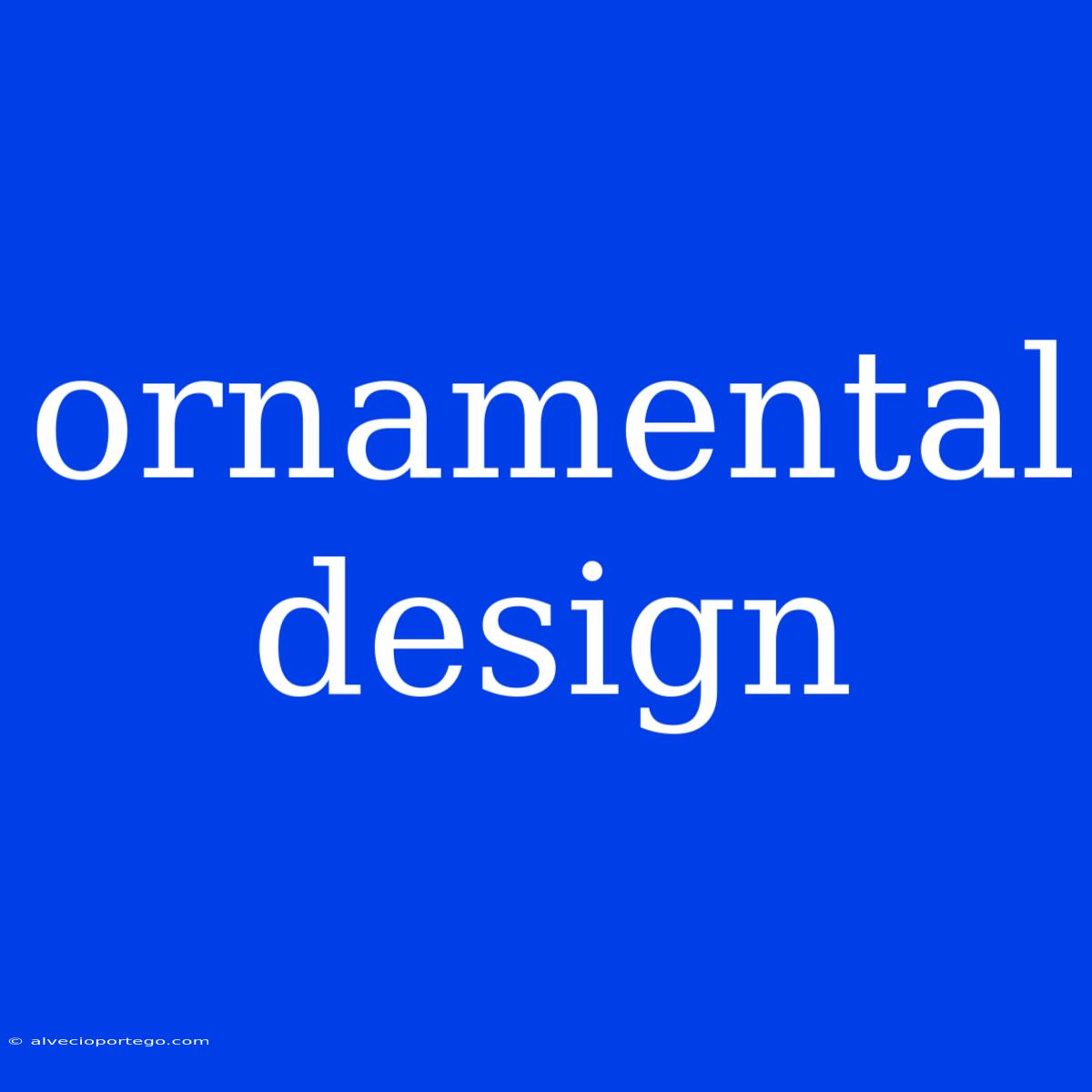The Art of Ornamental Design: Adorning the World with Beauty
Ornamental design, a vibrant and versatile art form, transcends mere decoration, weaving intricate patterns and motifs into the very fabric of our visual world. It encompasses a broad spectrum of styles, from the intricate flourishes of ancient civilizations to the minimalist elegance of modern architecture.
A Journey Through Time and Cultures
Ancient Origins:
- Ancient Egypt: Hieroglyphs, stylized flora and fauna, and geometric patterns adorned everything from tombs to temples, showcasing a belief in the power of symbols.
- Ancient Greece: The classical world was defined by harmonious proportions and balanced compositions, with iconic motifs like the meander pattern and the acanthus leaf.
- Roman Empire: The Romans embraced grandeur and symmetry, using ornate designs for mosaics, frescos, and architectural details.
Medieval Flourishes:
- Byzantine Art: Intricate mosaics and gold backgrounds, often featuring religious imagery, defined this period.
- Islamic Art: From intricate geometric patterns to calligraphy, Islamic art celebrates symmetry and beauty, evident in mosques, palaces, and everyday objects.
- Gothic Architecture: Stained glass windows, soaring arches, and intricate carvings, often featuring floral motifs, defined this period.
Renaissance and Beyond:
- Renaissance: The rebirth of classical styles influenced ornamental design with a focus on realism and naturalism.
- Baroque and Rococo: Exuberant flourishes, swirling patterns, and emphasis on movement characterized these periods.
- Art Nouveau: Inspired by nature, this style embraced organic forms, flowing lines, and whimsical motifs.
- Art Deco: Bold geometric patterns, stylized motifs, and luxurious materials were hallmarks of this movement.
The Many Faces of Ornamental Design
Functional Applications:
- Architecture: From intricate facades to decorative moldings, ornamental design enhances buildings both aesthetically and functionally.
- Textiles: Intricate patterns embellish fabrics, adding visual interest and cultural significance to clothing, carpets, and tapestries.
- Jewelry: Ornamental motifs adorn rings, necklaces, and bracelets, adding both beauty and symbolic meaning.
- Furniture: Inlays, carvings, and painted designs transform furniture into works of art.
Artistic Expressions:
- Graphic Design: Ornamental motifs are frequently used in logos, branding, and typography.
- Illustration and Drawing: Ornamental designs can be used independently or incorporated into larger compositions.
- Digital Art: Modern software allows for the creation of intricate ornamental designs and their application in various media.
The Enduring Legacy of Ornament
Ornamental design, with its rich history and enduring appeal, continues to inspire artists, designers, and artisans across the globe. It is a testament to the human desire to imbue our surroundings with beauty and meaning.

